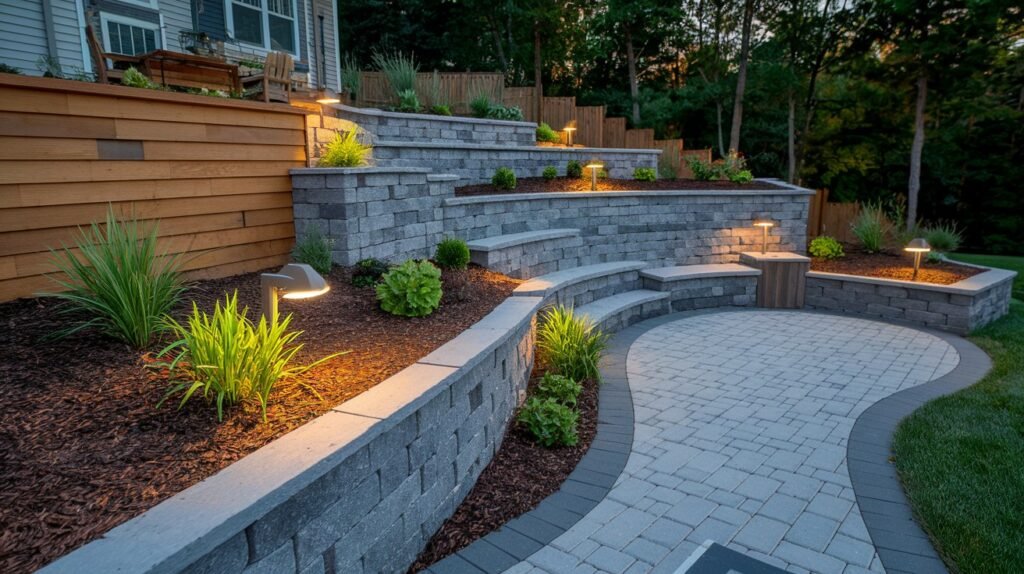Looking at your sloped backyard and feeling overwhelmed? You’re not alone. Many homeowners struggle with steep yards that seem impossible to use or enjoy.
The good news? Sloped backyards can become amazing outdoor spaces without breaking the bank. In this article, you’ll find 9 practical and affordable makeover ideas that work. We’ll show you real solutions that cost between $200 and $8,000 – not the $50,000+ projects you see on TV.
You’ll learn about budget-friendly retaining wall options and simple terracing techniques you can DIY. We’ll cover plant choices that prevent erosion naturally, plus smart lighting and pathway solutions that make your yard both beautiful and functional.
These aren’t fancy designer tricks. They’re tested methods from real homeowners who’ve successfully transformed their sloped yards. We’ve included actual costs, honest timelines, and what worked (and what didn’t).
Ready to turn your challenging slope into your favorite outdoor space? Let’s start with solutions that fit your budget and skill level.
Affordable Sloped Backyard Makeover Ideas
Here are nine proven solutions that work for real homeowners. Each idea includes actual costs so you can plan your budget wisely.
1. Build Tiered Garden Beds ($500-$2,000)
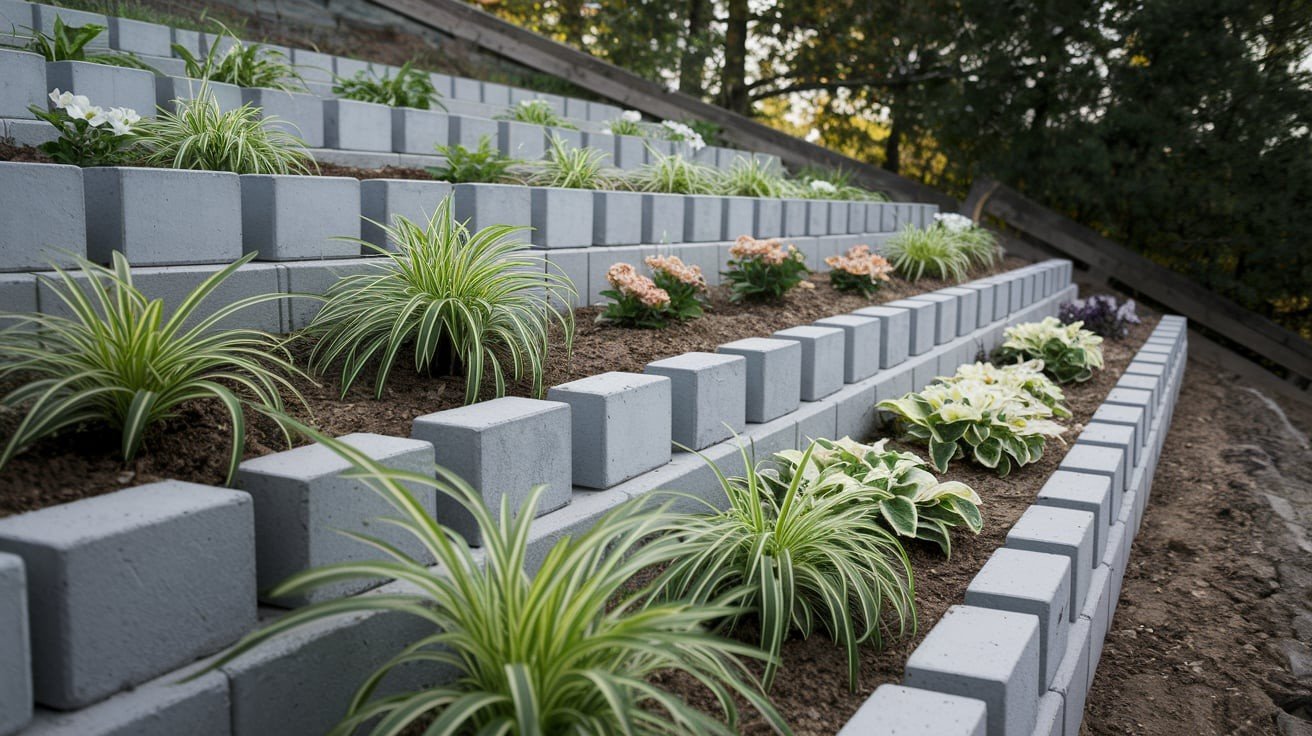
Tiered garden beds are perfect for beginners. You can build them yourself in a weekend. Your material options include railroad ties at $8-12 per tie, concrete blocks at $2-4 each, or natural stone at $15-25 per square foot.
Railroad ties give you the best bang for your buck. They’re heavy enough to stay put but light enough for one person to handle. Just make sure you buy untreated ties – the treated ones can harm your plants.
For plants, I recommend daylilies because they’re cheap and spread fast. Hostas work great for shady spots. Ornamental grasses like fountain grass are also excellent erosion fighters.
Pro tip: Start with the lowest tier first. Work your way up the slope. This prevents your hard work from washing away during the first rain.
2. Install Strategic Retaining Walls ($1,500-$5,000)
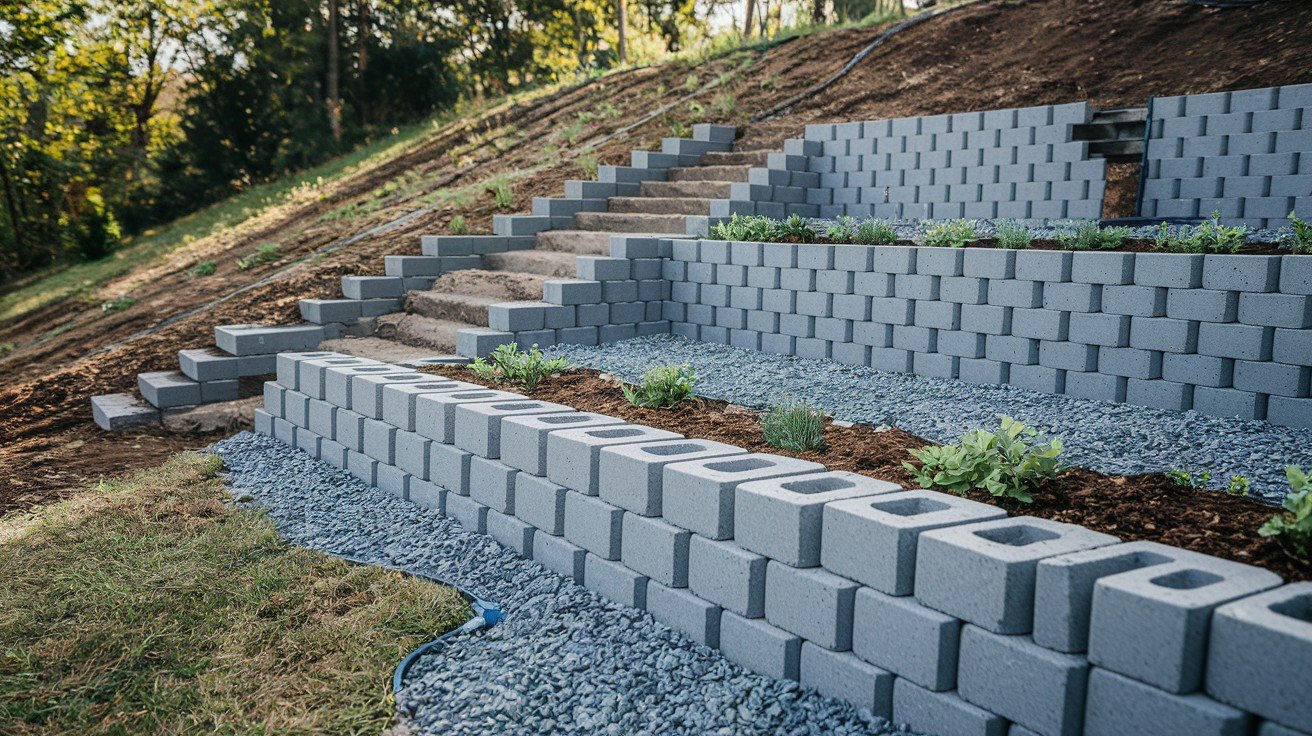
Small retaining walls pack a big punch. You don’t need a massive wall to make usable space. Concrete blocks work best for walls under 3 feet. Natural stone gives you a premium look. Timber walls fit budget projects perfectly.
Concrete blocks are your friend. They interlock like giant Legos. No mortar needed for short walls. You can rent a small excavator for $200-300 per day to speed up the digging.
Critical warning: Any wall over 4 feet needs an engineer. Don’t risk it. Your city probably requires permits, too. Behind every good wall is good drainage. Add gravel and a drain pipe. Water kills retaining walls faster than anything else.
3. Build Terraced Patios ($2,000-$8,000)
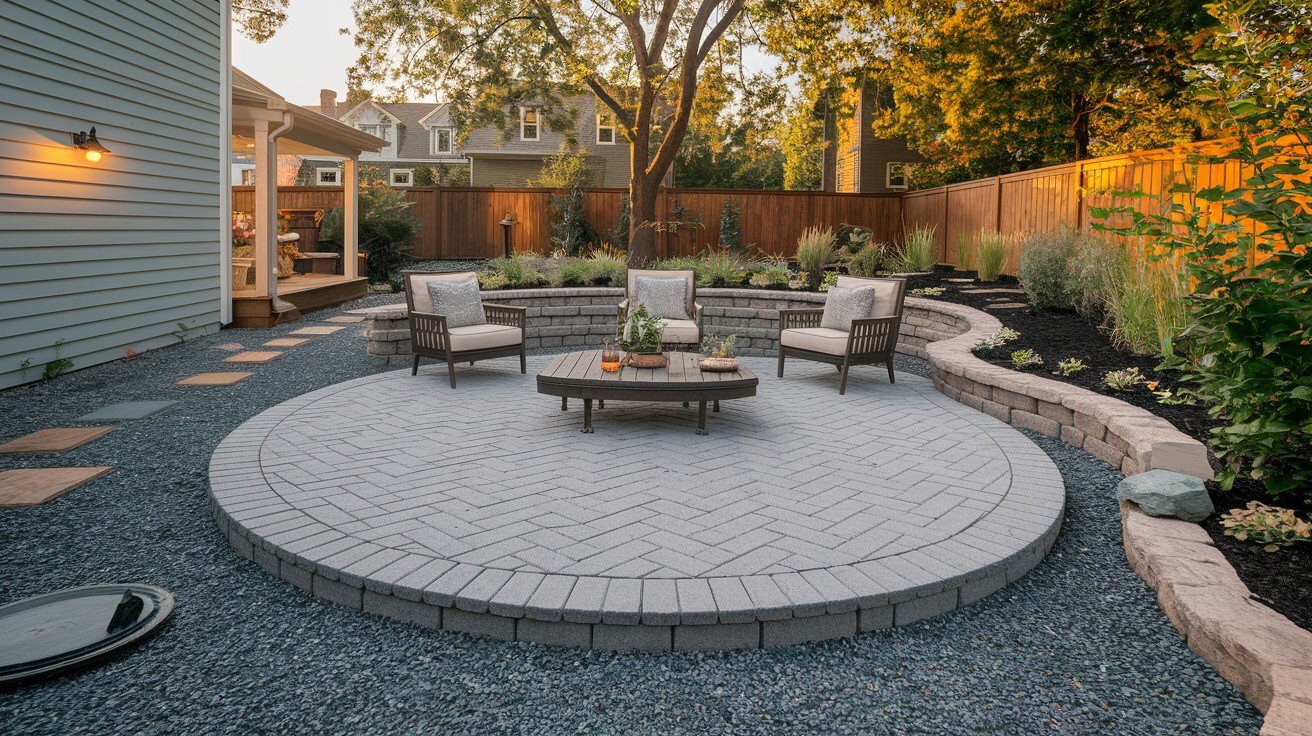
Flat space changes everything. This is where you’ll spend most of your outdoor time. Pavers beat concrete every time. They don’t crack like solid concrete. Plus, you can fix individual pavers if something goes wrong.
Popular paver patterns include herringbone, which looks expensive but costs the same as other patterns. Running bond is easiest for beginners. Basket weave works great for smaller spaces.
The secret is in the base. You need 4-6 inches of compacted gravel. Skip this st, ep and your patio will sink. Rent a plate compactor for $40 per day. Your back will thank you.
Money-saving trick: Buy pavers at the end of summer. Many suppliers offer 20-30% discounts to clear inventory.
4. Add Functional Steps and Pathways ($300-$1,500)
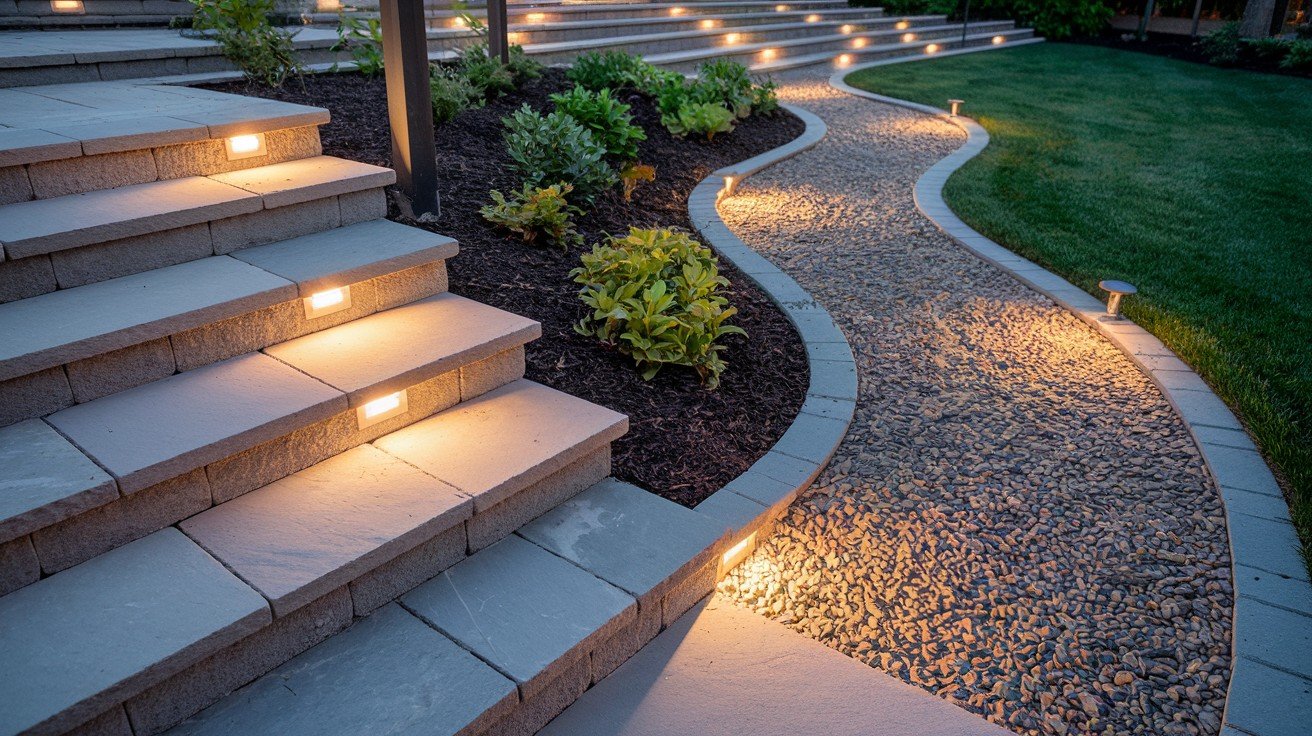
Steps connect your different levels safely. Good pathways make your whole yard feel bigger. Affordable step materials include concrete pavers at $3-6 each, natural stone at $8-15 per step, or pressure-treated lumber at $20-40 per step.
For pathways, crushed gravel works great. It drains well and costs about $30 per ton. Add landscape fabric underneath to prevent weeds.
Safety matters here. Install handrails for any set of steps over three risers. Your insurance company will appreciate it, too. Solar lights along pathways cost $15-25 each. They charge during the day and light your way at night. No wiring needed.
5. Plant Native Ground Cover Gardens ($200-$800)
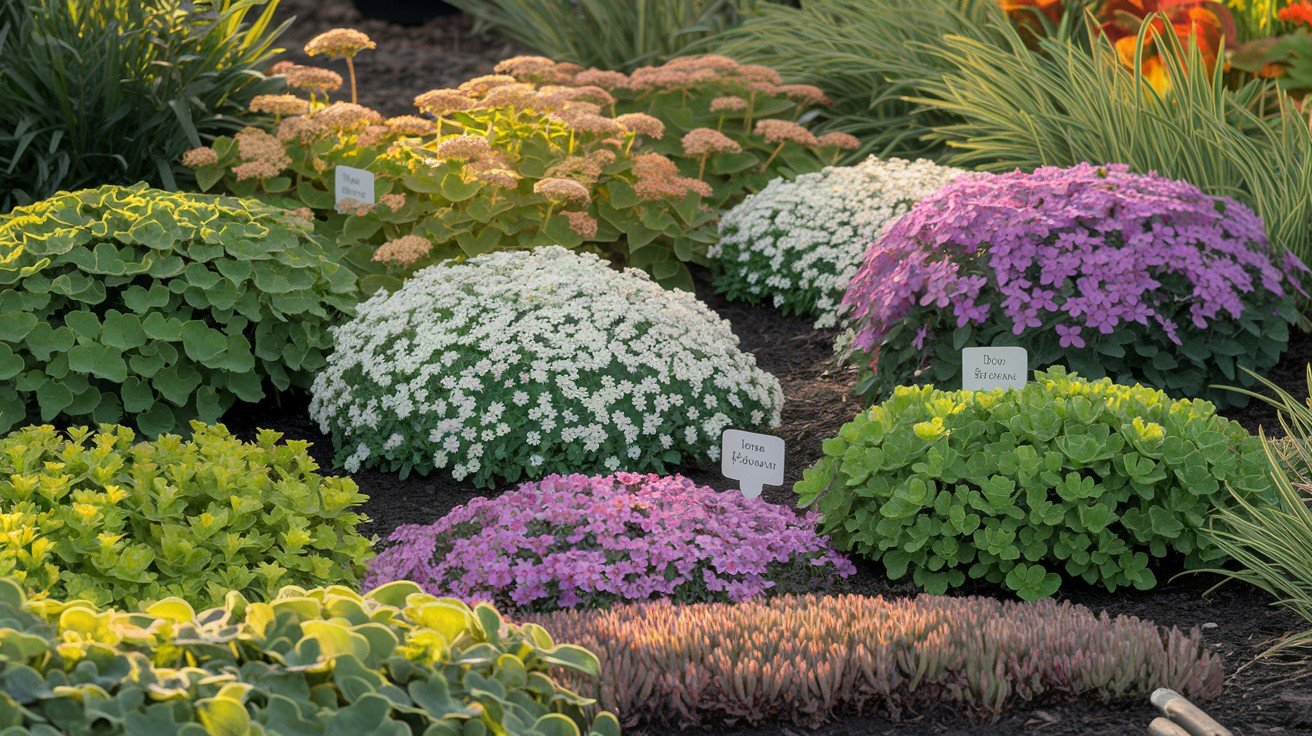
This is the cheapest way to fix erosion problems. Native plants practically take care of themselves. Top erosion-fighting plants include pachysandra for shade, creeping phlox for sun, wild ginger for wet spots, and sedums for dry areas.
Buy small plants and be patient. A $3 plant becomes a $20 plant in two years. Many nurseries sell native plants in bulk packs.
Smart shopping tip: Check with your local extension office. They often sell native plants at spring sales for half the retail price. Plant in fall when possible. Plants establish better roots before summer heat hits.
6. Use Decorative Rocks and Boulders ($400-$1,200)
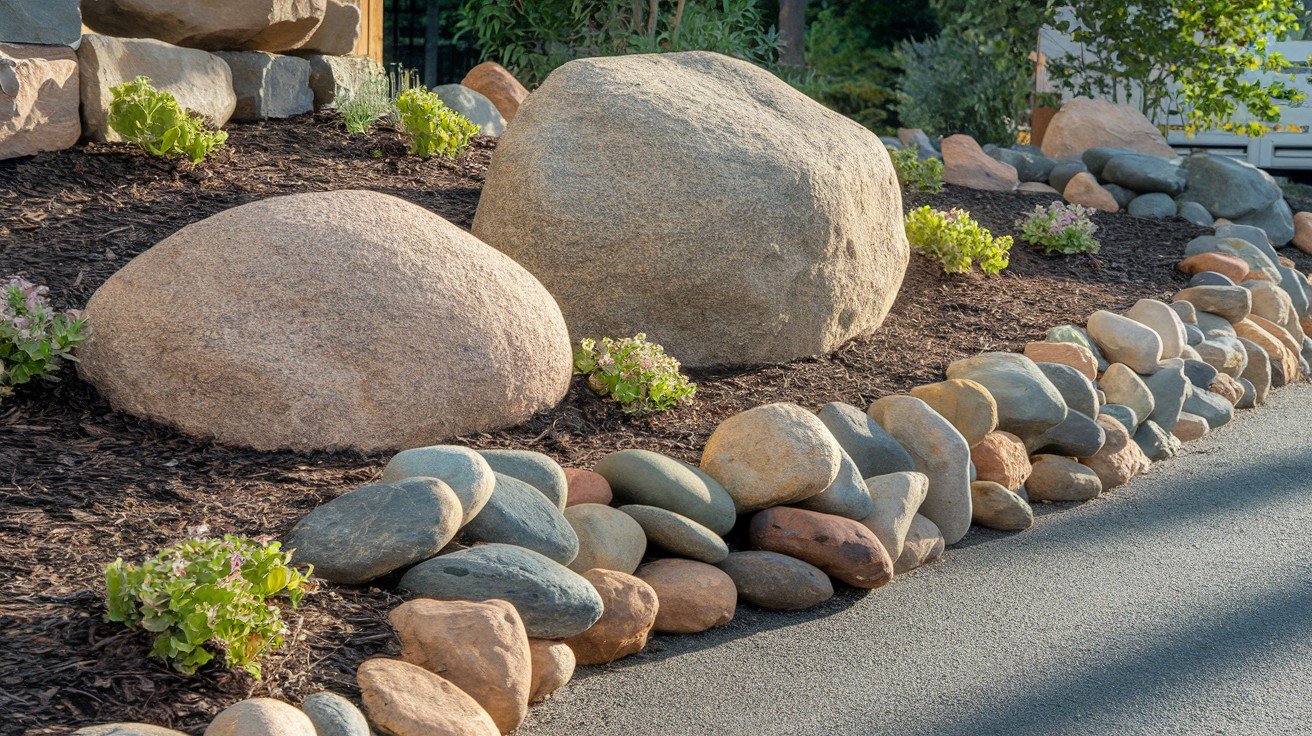
Rocks work 24/7 to prevent erosion. They never need watering or fertilizing. Find affordable rocks at stone yards, which offer the cheapest option. Craigslist and Facebook Marketplace also have deals. Construction sites sometimes sell excess materials – just ask for permission first.
Mix different sizes for the most natural look. Use the “rule of thirds” – one large boulder, two medium rocks, three smaller stones. River rocks cost $50-150 per ton. Boulders run $100-600 each, depending on size. Get them delivered unless you own a dump truck.
Placement tip: Bury rocks about one-third of their height. This makes them look natural instead of like they were just dropped there.
7. Install Water Management Features ($600-$2,500)
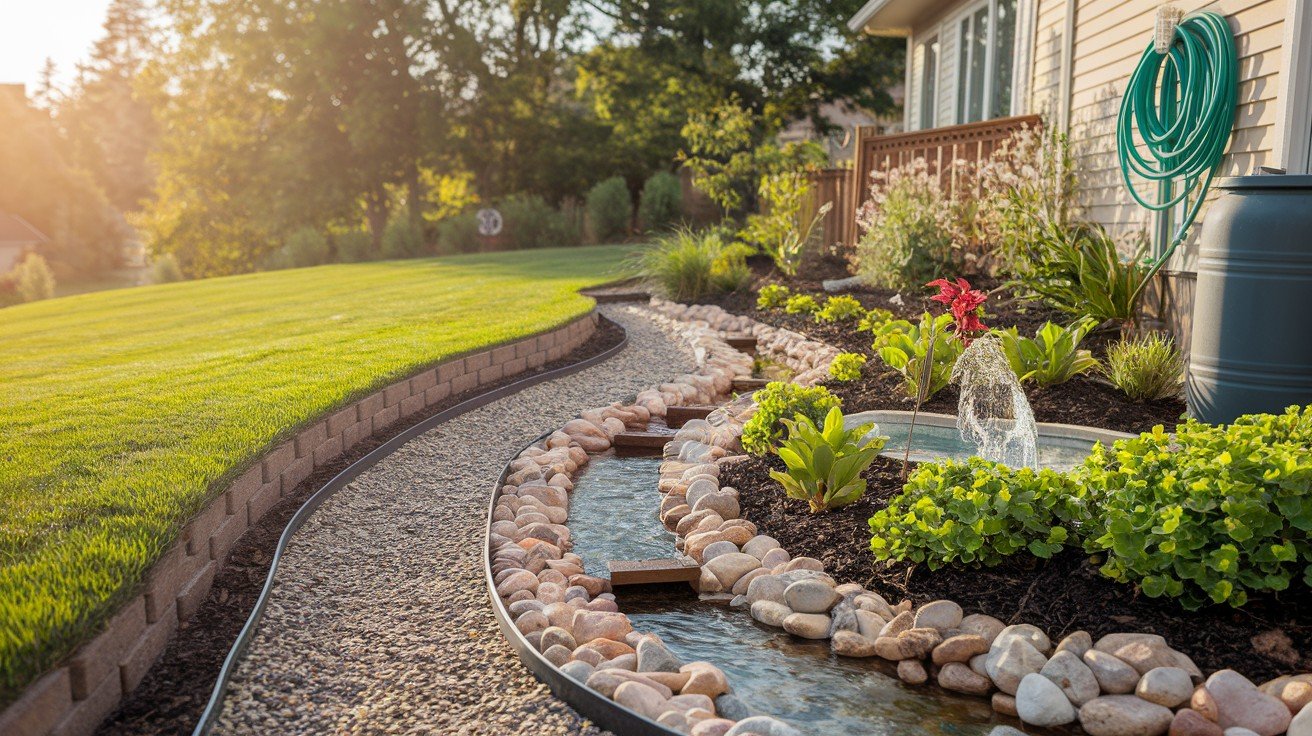
Water problems won’t fix themselves. Smart drainage protects everything else you build. French drains are the workhorses of slope drainage. Dig a trench, add gravel and a perforated pipe. Water flows away instead of pooling.
Simple water features that help include dry creek beds at $300-800, rain gardens at $200-600, and small fountains at $400-1,200. Dry creek beds look great and handle heavy rain. Use rounded river rocks for the most realistic look.
Pro move: Install a simple rain barrel system. Gutters direct water to barrels, and then you use it for watering plants. Saves money on water bills, too.
8. Build Multi-Level Seating Areas ($800-$3,000)
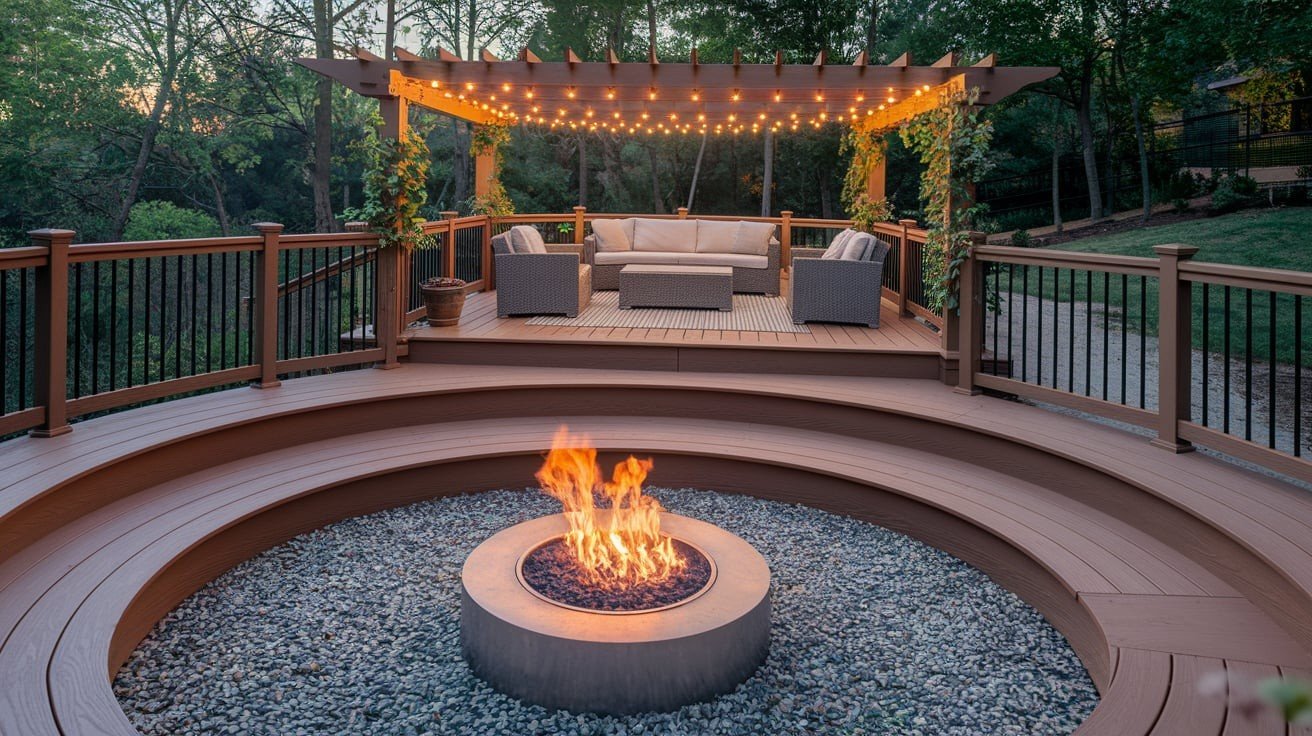
Different levels mean different activities. Use what your slope gives you naturally. Fire pits work great on the lowest level. Gravity helps with drainage here. A simple steel ring costs $100-200. Add gravel and you’re ready for s’mores.
Deck refresh ideas include power washing and staining for $150-300, adding railings for safety at $200-500, or installing outdoor carpet for $100-400. Pergolas make instant rooms outdoors. A basic 10×10 pergola kit costs $800-1,500. Add string lights and climbing vines for a magical feel.
Budget hack: Check Facebook Marketplace for used outdoor furniture. A $500 patio set often sells for $150 when people move.
9. Implement Smart Lighting Solutions ($150-$600)
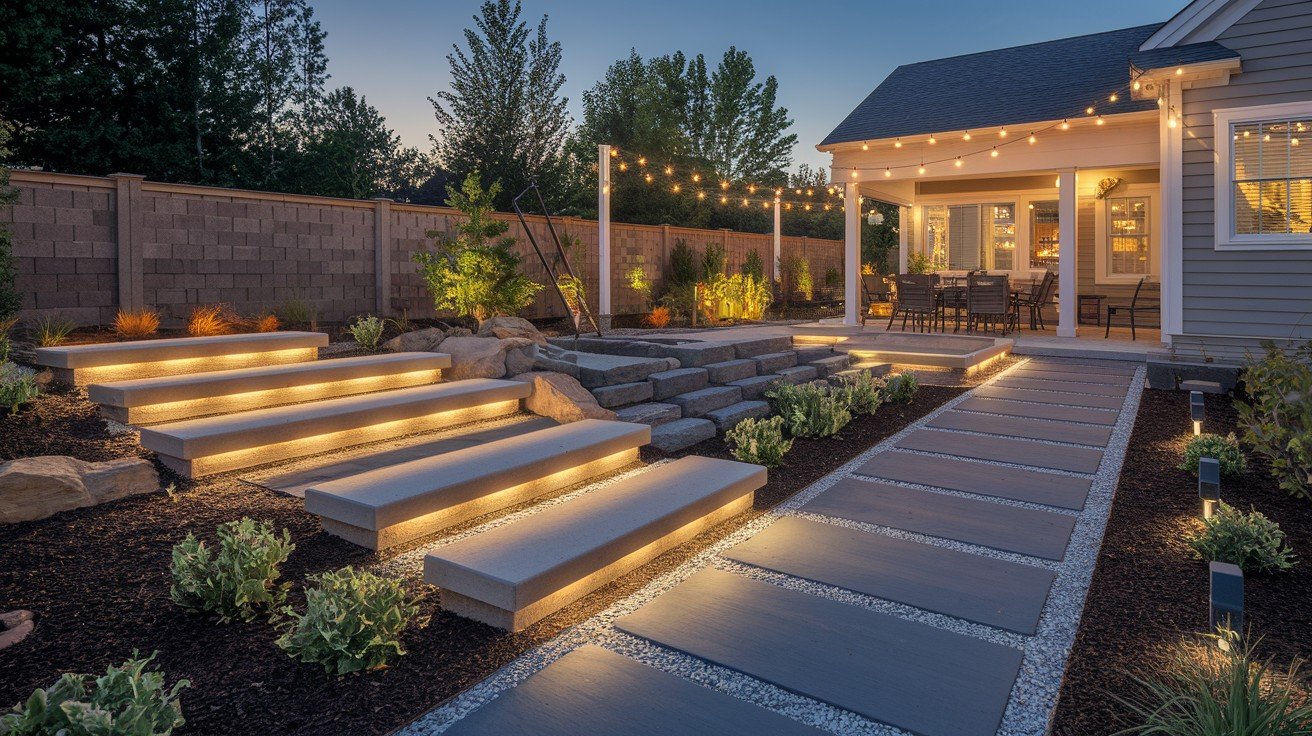
Good lighting extends your outdoor time. It also prevents twisted ankles on slopes. Solar lights have come a long way. Modern LED solar lights stay bright for 8-10 hours. No electrical work needed.
Lighting priorities include steps and pathway safety first, accent lighting for pretty features, and security lighting for dark corners. String lights add instant ambiance. LED strings last 10 times longer than old-fashioned bulbs. You can get 100 feet of commercial-grade LED strings for $40-60.
Installation tip: Use outdoor-rated extension cords and timers. Your lights will last longer if they’re not on 24/7. Motion sensor lights work great for stairs. They turn on automatically when you need them most.
Conclusion
Your sloped backyard doesn’t have to stay a problem area. These 9 affordable ideas prove you can create a beautiful, functional space without spending a fortune.
Start small with native plants and basic pathways if you’re on a tight budget. You can always add retaining walls, terraced patios, and lighting later. The key is tackling one project at a time and focusing on safety first.
Remember, every slope is different. What works perfectly for your neighbor might need adjustments for your yard. Don’t rush the process. Take time to plan, get multiple quotes when needed, and celebrate each completed phase.
Your sloped backyard transformation is possible. Pick one idea that excites you most and start there. Before you know it, you’ll have the outdoor space you’ve always wanted.
Frequently Asked Questions
What’s the cheapest way to improve a sloped backyard?
Start with native ground cover plants and basic pathways. These provide immediate erosion control and accessibility improvements for under $1,000.
Can I build retaining walls myself on a budget?
Small walls under 3 feet using concrete blocks are DIY-friendly. Taller walls or complex drainage situations require professional installation for safety.
How much does a basic sloped backyard makeover cost?
Budget $3,000-$8,000 for modest improvements, including plants, pathways, and basic terracing. Comprehensive makeovers range $15,000-$25,000, including professional work.
What plants work best for sloped yards on a budget?
Native ground covers, ornamental grasses, and deep-rooted perennials provide erosion control. Buy in bulk or start from seeds for savings.
Should I tackle drainage issues first or landscaping?
Always address drainage and erosion control first. These foundational elements protect your investment and prevent costly damage to other improvements.

